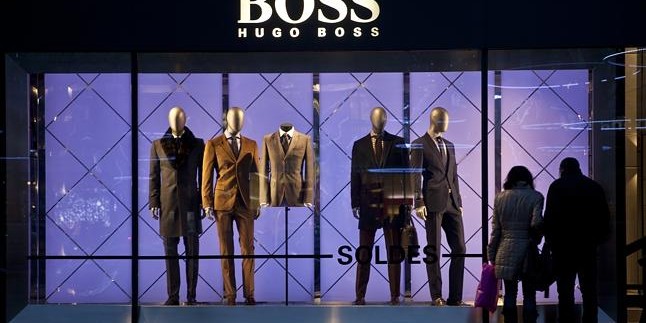How retailers are branding with scent

Between the bouncy music and stacks of colourful jeans, visitors to the Benetton on Michigan Avenue might catch a whiff of a blooming marketing trend.
Mounted high in the corner beside the store entrance, a scent diffuser, installed in November, spreads a bright spring fragrance modelled after Benetton’s Verde cologne.
“It finishes the emotion we are trying to create in the store,” says Robert Argueta, director of visual merchandising for the United Colors of Benetton, who is testing the scent in Benetton’s Chicago and New York flagships and has been so pleased with the feedback, and the inadvertent increase in cologne sales, that he plans to roll it out in more stores. “It’s the first and last impression a customer gets.”
Long the domain of casinos and hotels, scenting is increasingly catching on among retailers and in car showrooms, sports stadiums, airports, banks and apartment buildings that seek to distinguish themselves with customers via the deeply influential sense of smell.
“It’s a way to market above the clutter,” says Roel Ventura, a Seattle-based ambient designer with Ambius, which designs business environments. “We are bombarded with so many messages, so this creates an experience that will last longer than the music at the mall.”
The tactic also is gaining traction among businesses hoping to drum up sales thanks to research that has shown the right scent can open people’s wallets, project a sense of comfort and home (think hotels), shorten the time you believe you’re waiting (think banking), or even improve your sense of performance (think gym).
While smells can be a turnoff or cause health problems for some people, the global scent-marketing industry is on the rise, grossing an estimated $200 million in revenue last year and growing around 10 percent annually, says Jennifer Dublino, vice president of development at ScentWorld Events, the industry’s trade group in Scarsdale, New York.
Scent marketing is divided into two main categories: ambient scenting, which fills a space with a pleasant smell, and scent branding, which develops a signature scent specific to a brand, like an olfactory logo. The former can cost $US100 ($108) to $US1000 a month, depending on the size of the space. The latter can run anywhere from $US3000 to $US25,000, plus a monthly maintenance fee.
If the aim is to improve consistency or create or maintain an iconic brand, a signature scent may be best, says Ed Burke, director of marketing and communications at ScentAir, a leading scent-marketing company based in Charlotte, NC, that says it scents 70,000 locations, including Benetton. Less than 10 per cent of the company’s clients go that route, he says.
“Hugo Boss is a great example of a signature scent,” says Burke, whose company created the rich tamboti wood scent that Hugo Boss pumps through its stores’ heating and air conditioning systems, the preferred delivery method for large spaces. The high-end brand, an early retail adopter of scenting in 2011, at the time sold its apparel mostly in other stores like Nordstrom and Neiman Marcus, so scenting was a way to tell a consistent brand story, Burke says.
If the business is just looking for a smell to give an olfactory oomph to the customer experience, they usually can find something that works among the 3,000 scents in ScentAir’s catalog, Burke says.
Some venues use multiple scents. The scent program launched last month at Marlins Park baseball stadium in Miami includes the smell of caramel popcorn in the general concourse areas for a “whimsical, family atmosphere”; a more sophisticated black orchid aroma in the stadium’s luxury Diamond Club; and a muted orange scent in the team store to reflect the stadium’s history of hosting the Orange Bowl.
Businesses you wouldn’t normally think would scent are jumping on the bandwagon. Burke says ScentAir’s newer clients include rent-to-own retailers like Aaron’s that use scents like “clean cotton” and “golden bamboo” to “project a sense of home and comfort”.
Some banks have signed on, with research suggesting scent can shorten the time you feel you’re standing in line, says Roger Bensinger, executive vice president for AirQ, a division of Milwaukee-based Prolitech.
At Belgium’s Brussels Airport, a scent called “fresh clean,” which is “almost like being outdoors after a spring rain,” greets visitors as they clear customs and in the parking lot, Bensinger says. At Heathrow Airport in London, a customised scent called “powder room,” originally created to welcome travellers during the 2012 Olympics, has become permanent, filling the terminals with “a warm, youthful smell, like walking into an upscale changing room,” Bensinger says.
AirQ – whose range of retail clients includes Abercrombie and Fitch, luxury designer Pierre Cardin, Lenscrafters and Goodwill stores – also has several large gym chains in test mode, a promising opportunity because certain scents, such as peppermint and lemon, can improve perception of performance, Bensinger said.
Scenting is partly an art of subliminal messaging.
“It’s almost like background music, a canvas against which all else plays,” says Caroline Fabrigas, CEO of ScentWorld, which was founded by her late husband, Harald Vogt, a former advertising executive. “You shouldn’t really notice it. It’s just a feeling you have in that space.”
*Original Article by Chicago Tribune: http://www.brw.com.au/p/marketing/how_retailers_are_branding_with_rB7fOEqXTJ6Q7gXg6VIZnJ

